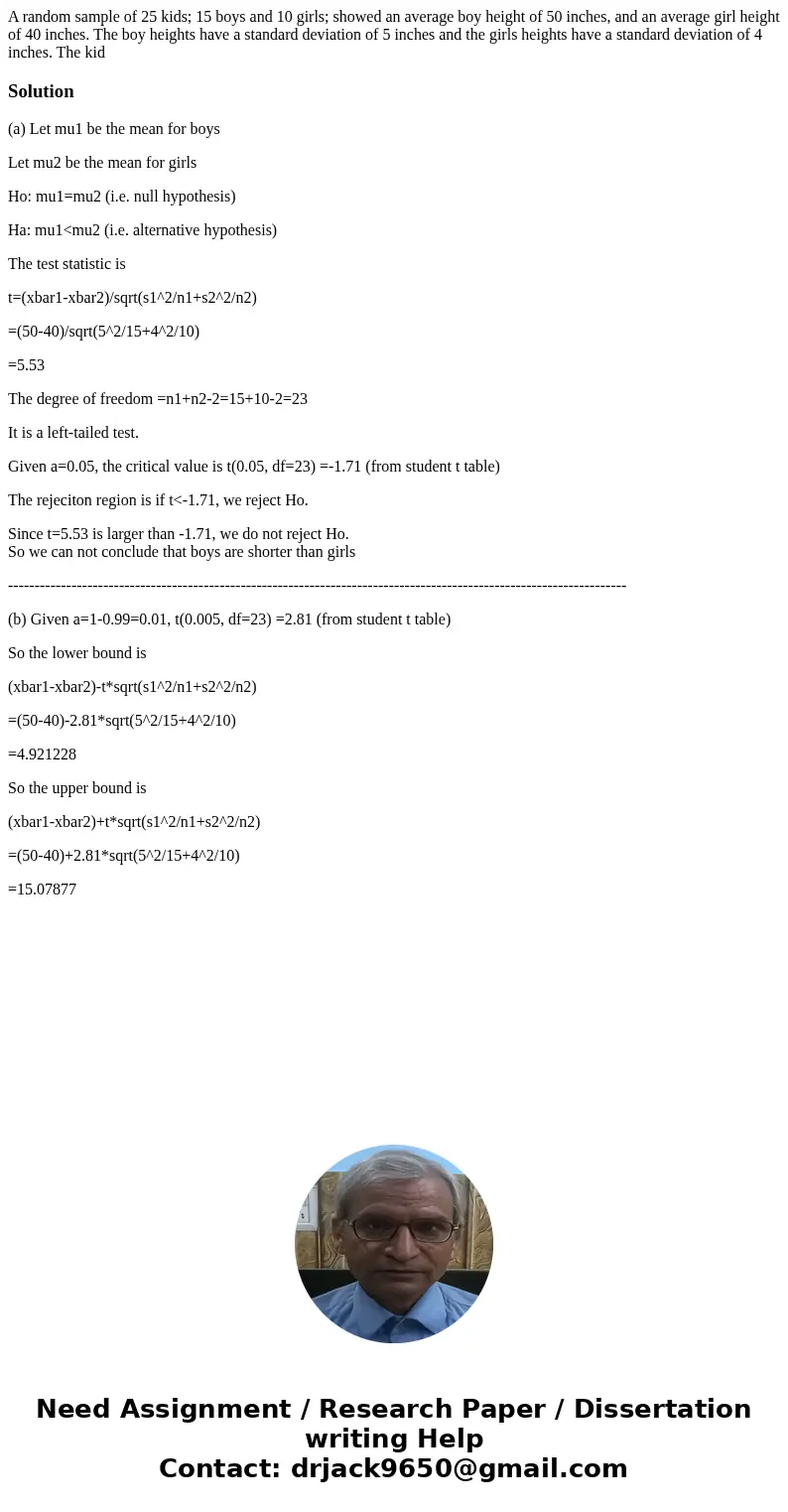A random sample of 25 kids 15 boys and 10 girls showed an av
A random sample of 25 kids; 15 boys and 10 girls; showed an average boy height of 50 inches, and an average girl height of 40 inches. The boy heights have a standard deviation of 5 inches and the girls heights have a standard deviation of 4 inches. The kid
Solution
(a) Let mu1 be the mean for boys
Let mu2 be the mean for girls
Ho: mu1=mu2 (i.e. null hypothesis)
Ha: mu1<mu2 (i.e. alternative hypothesis)
The test statistic is
t=(xbar1-xbar2)/sqrt(s1^2/n1+s2^2/n2)
=(50-40)/sqrt(5^2/15+4^2/10)
=5.53
The degree of freedom =n1+n2-2=15+10-2=23
It is a left-tailed test.
Given a=0.05, the critical value is t(0.05, df=23) =-1.71 (from student t table)
The rejeciton region is if t<-1.71, we reject Ho.
Since t=5.53 is larger than -1.71, we do not reject Ho.
So we can not conclude that boys are shorter than girls
---------------------------------------------------------------------------------------------------------------------
(b) Given a=1-0.99=0.01, t(0.005, df=23) =2.81 (from student t table)
So the lower bound is
(xbar1-xbar2)-t*sqrt(s1^2/n1+s2^2/n2)
=(50-40)-2.81*sqrt(5^2/15+4^2/10)
=4.921228
So the upper bound is
(xbar1-xbar2)+t*sqrt(s1^2/n1+s2^2/n2)
=(50-40)+2.81*sqrt(5^2/15+4^2/10)
=15.07877

 Homework Sourse
Homework Sourse